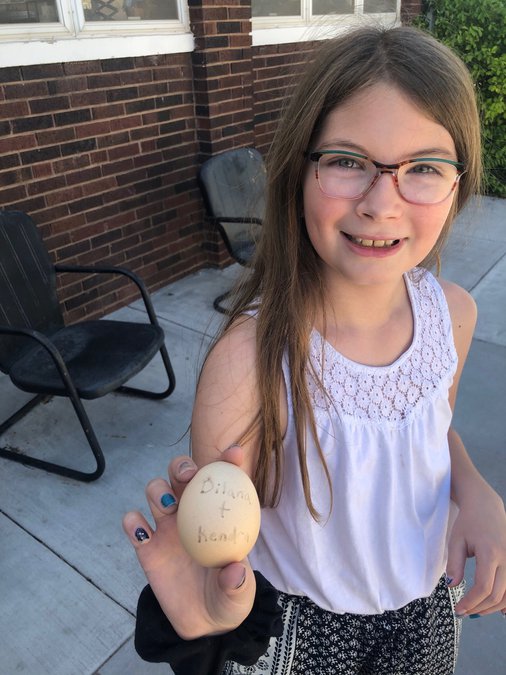A popular science experiment for Great Bend elementary school students is to create a package that will protect a raw egg from breaking, even if dropped from the top of a ladder or the bucket of a cherry picker. Some students at Eisenhower Elementary School were able to recreate the experiment from home this summer, with a little help from their parents.
Two fifth-graders, Dilana and Kendra, created their padded container by filling a shoebox with items they found around their homes, including packing peanuts, bubble wrap, tissue paper and soft fuzzy pom pom balls to cushion the egg. Under the supervision of Dilana’s mom, they tossed the box from the roof of a two-story house, about 30 feet. A plastic bag attached as a parachute didn’t appear to affect the result from that height but their egg survived, even after landing on the driveway.
The two friends got the idea one morning while walking to the school with Kendra’s dad to pick up their lunches. He suggested it, recalling how firefighters have previously come to the school to drop eggs from as high as 75 feet.
“It wasn’t really an assignment,” Dilana said of the project. “Kendra and I wanted to do it because the fifth-graders were supposed to do it.”
The girls were fairly confident that their egg would survive but happy to see their design was successful. The shoe box itself absorbed most of the impact when it landed on the pavement, they said.
Several egg drop experiment designs can be found online. For anyone who wants to try this at home, a website at Virginia Tech (https://www.phys.vt.edu/outreach/projects-and-demos/egg-drop.html) suggests, “(Experimenters) should think about creating a design that would reduce the amount of energy transferred from potential to kinetic energy on the egg shell. Some ways to do this would be to decrease the final speed of the egg using air resistance, increasing the time of the collision using some sort of cushion, transferring the energy into something else, or whatever else they can think of!”








